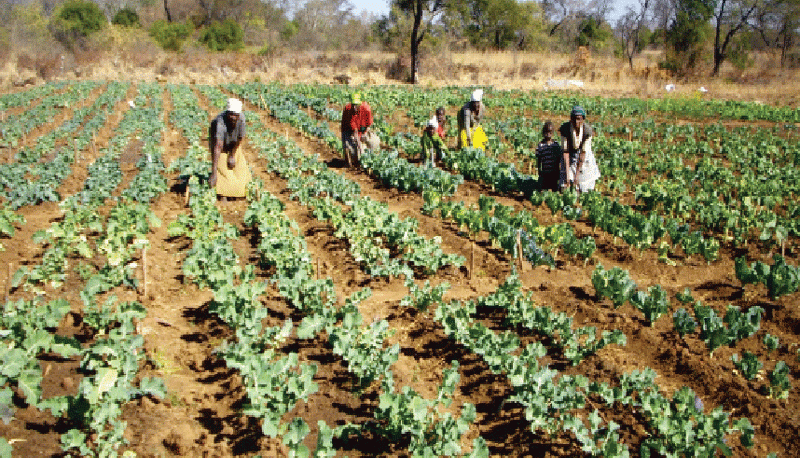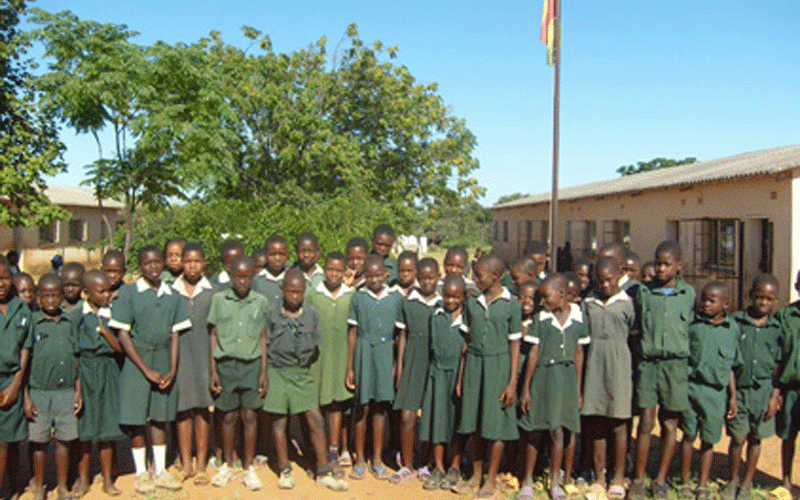
Climate change poses a serious threat to global food security and livelihoods.
Government bodies and non-governmental organisations (NGOs) across the globe have devised numerous interventions aimed at minimising the adverse effects of this phenomenon.
However, it is important to acknowledge that the impact of climate change affect men and women differently.
In agriculture, gender roles, responsibilities and limitations vary, leading to diverse vulnerabilities and opportunities in the face of a changing climate.
Therefore, a gender-sensitive approach is necessary for climate-smart agriculture (CSA) - which aims to increase productivity, adaptability and reduce greenhouse gas emissions in the agricultural sector.
Gender roles in agriculture
Women play a crucial role in agriculture, especially in developing countries, where they make up around 43% of the labour force, according to FAO.
They engage in various activities such as crop production, livestock management, processing, marketing and ensuring household food security.
- Addressing unfair trade key to transforming African food systems
- Urgent economic structural transformation necessary
- Residents finger ZETDC employees in cables theft
- New perspectives: Building capacity of agricultural players in Zim
Keep Reading
However, women encounter numerous challenges that restrict their access to productive resources such as land, water, inputs, credit, extension services and markets.
They also have limited decision-making power, which hinders their ability to adopt and benefit from CSA practices and technologies.
Conversely, men in agriculture also face challenges related to climate risks and limited access to necessary resources and knowledge for CSA adoption.
Gender impacts of climate change
Climate change affects agriculture through changes in rainfall patterns, rising temperatures, extreme weather events, pest and disease outbreaks, and soil degradation.
These changes have differing effects on women and men farmers, depending on their roles, resources and capacities.
For example, women are more vulnerable to droughts due to their reliance on rain-fed agriculture and limited access to irrigation systems.
Similarly, their higher exposure to waterborne diseases increases their susceptibility to floods.
On the other hand, men face increased risks of heat stress due to physically demanding tasks like ploughing and harvesting.
Additionally, climate variability and uncertainty increase the likelihood of crop failure and livestock loss, impacting men's livelihoods.
Gender-sensitive interventions
Promoting inclusivity and effectiveness in CSA requires addressing gender issues and gaps in the agricultural sector.
A gender-responsive approach should acknowledge the distinct needs, preferences, opportunities and constraints faced by women and men farmers.
Equal involvement of both genders is crucial in the design, implementation and evaluation of CSA interventions.
Several gender-sensitive interventions can facilitate this approach, including conducting gender analyses to understand the roles, resources, capacities and vulnerabilities of women and men farmers concerning climate change and CSA.
Providing gender-disaggregated data and information on climate change impacts and CSA benefits is also essential.
Enhancing women's access to productive resources, empowering them in decision-making processes, building their knowledge and skills, engaging men as allies and creating enabling policies and institutions are vital steps towards achieving gender equality in CSA.
High-level recommendations to Government and NGOs for promoting gender equality in agriculture
Governments and NGOs play a crucial role in promoting gender equality in agriculture.
They have the power to influence policies, institutions, and practices that affect the opportunities and constraints faced by women and men farmers.
To achieve this, it is recommended that governments and NGOs.
Enact and enforce laws that protect women's rights to land, water, inputs, credit, extension services and markets.
Provide gender-responsive public services and infrastructure, including water supply, sanitation, healthcare, education and transportation.
Support women's organisations and networks that empower women to voice their concerns, demand their rights and participate in decision-making processes.
Invest in gender-sensitive research and innovation that addresses the challenges and opportunities faced by women and men farmers regarding climate change, food security, nutrition and market access.
Promote gender mainstreaming in agricultural policies, programmes and projects by conducting gender analysis, utilising sex-disaggregated data, setting gender-specific objectives and indicators, allocating adequate resources and ensuring accountability.
Raise awareness and build capacity among policymakers, practitioners, private sector actors and civil society organisations regarding the importance and benefits of gender equality in agriculture.
Caisses de résilience (CdR) approach
A notable example of a gender-sensitive intervention for CSA is the Caisses de résilience (CdR) approach, implemented by the FAO in countries like Burkina Faso, Mali and Niger.
The CdR approach aims to enhance the resilience of rural communities to climate shocks and stresses by combining social protection, disaster risk reduction and climate change adaptation measures.
Key features of the CdR approach include:
Involving both women and men in identifying climate risks and adaptation options while considering their distinct needs and priorities.
Supporting women's access to and control over productive resources through collective savings and loan groups, input fairs and vouchers and risk transfer mechanisms.
Enhancing women's decision-making power and influence in household and community affairs by promoting their participation and leadership in local institutions.
Building women's knowledge, skills and confidence in adopting CSA practices and technologies.
Engaging men as allies and partners by raising awareness and involving them in gender dialogues and training.
The CdR approach has shown positive impacts on women's empowerment and gender equality in agriculture, as well as on food security, income, productivity and adaptation outcomes.
However, it must be noted that scaling up gender-sensitive interventions is a complex and context-specific process that requires careful planning, implementation, monitoring and evaluation.
There is no one-size-fits-all formula for scaling up, but some general principles and strategies can be derived from existing experiences and evidence.
Some of the factors that can facilitate the scaling up of gender-sensitive interventions are:
Aligning the intervention with the national and local policies, priorities and commitments on gender equality and climate change and engaging with relevant stakeholders from the public, private and civil society sectors to ensure their support and collaboration.
Securing the ownership and participation of the target communities, especially women and men farmers, in the design, implementation and evaluation of the intervention and ensuring that their needs, preferences, capacities and constraints are considered.
Providing proof of concept and evidence of the impact of the intervention by conducting rigorous research, evaluation and learning activities and disseminating the results and lessons learned to inform policy and practice.
Adapting the intervention to different contexts and settings by taking into consideration the socio-cultural, economic, environmental and institutional factors that may affect its feasibility, effectiveness and sustainability.
Building the capacity and skills of the implementers and beneficiaries of the intervention by providing adequate training, mentoring, coaching and technical assistance and creating platforms for knowledge exchange and peer learning.
Mobilising adequate resources and creating enabling conditions for the intervention by securing long-term funding, developing partnerships and networks, establishing supportive legal and regulatory frameworks, and addressing potential barriers and challenges.
The Intervention with Microfinance for AIDS & Gender Equity (IMAGE) in South Africa is one notable example of gender-sensitive interventions that have been successfully scaled up.
It is a combined microfinance and gender training intervention that aims to empower women economically and socially, reduce their vulnerability to HIV infection and domestic violence, and improve their health outcomes.
The intervention was initially implemented in rural Limpopo province in 2001–2005, reaching over 5 000 women.
It was then scaled up to other provinces in South Africa (KwaZulu-Natal, Gauteng) as well as other countries (Tanzania, Zimbabwe) in 2006–2010, reaching over 25 000 women.
The intervention has shown positive impacts on women's income, savings, asset ownership, empowerment, social capital, HIV knowledge, condom use, sexual violence experience and mental health.
The key factors that enabled its scaling up were strong partnerships with local microfinance institutions, rigorous research and evaluation to demonstrate its effectiveness; adaptation of the intervention to different contexts; capacity building of staff and participants; involvement of men and community leaders; advocacy and communication strategies; integration with existing policies and programmes on microfinance, health and gender.
Conclusion
Recognising gender issues is critical for achieving the goals of CSA, which include increasing productivity, enhancing adaptation and reducing greenhouse gas emissions.
By addressing the diverse roles, responsibilities, opportunities, and constraints faced by women and men farmers regarding climate change and CSA, we can foster a more resilient, sustainable and inclusive agricultural sector where both genders can equally contribute and benefit.
Probably, through these strategic measures, we can attain the elusive objectives of CSA that have proven challenging to accomplish in previous attempts.
- Tazvivinga is a development economist passionate about assessing the costs and benefits of climate policies. Chakauya is an agronomist who holds a deep passion for implementing gender-sensitive approaches to effectively tackle the challenges posed by climate change — ptazvy@gmail.com. These weekly New Horizon articles, published in the Zimbabwe Independent, are coordinated by Lovemore Kadenge, an independent consultant, managing consultant of Zawale Consultants (Pvt) Ltd, past president of the Zimbabwe Economics Society and past president of the Chartered Governance & Accountancy Institute in Zimbabwe (CGI Zimbabwe). — kadenge.zes@gmail.com or mobile: +263 772 382 852.






